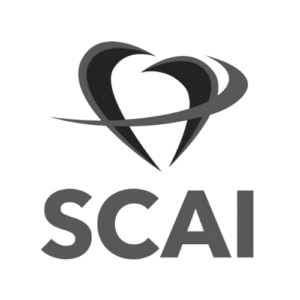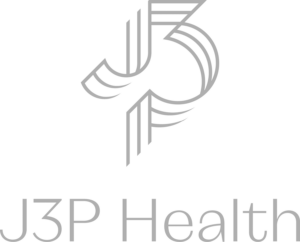Within the ever-evolving landscape of healthcare, the advancement of stroke care has marked a significant progression towards more effective and specialized treatments. A noteworthy achievement in this trajectory is the systematic transition from primary stroke care to the attainment of thrombectomy-capable status. Primary stroke care, as the foundational tier of treatment, is meticulously designed to expedite diagnosis and administer intravenous tissue plasminogen activator (IV tPA) promptly, targeting the dissolution of blood clots responsible for stroke onset. Undoubtedly, primary stroke centers serve as pivotal hubs for effecting early interventions. However, the transition to thrombectomy-capable status denotes a calculated advancement, indicative of a healthcare facility’s strategic preparedness and adeptness in deploying advanced endovascular thrombectomy techniques.
As we delve into the details of this transformative journey, we will consider the necessary steps to achieve thrombectomy-capable status, address the inherent challenges, and objectively celebrate the gratifying outcomes associated with this progressive evolution in stroke care.
Step 1: Conducting a Comprehensive Capability Assessment
Prior to initiating the transition towards thrombectomy capability, healthcare institutions undertake a thorough evaluation of their existing stroke care infrastructure. This assessment encompasses the scrutiny of response times, diagnostic capabilities, and the presence of neurointerventional expertise. Our team at Corazon are experts in assessing a hospital’s current state and determining the additional infrastructure, staffing, equipment, and additional needs prior to initiating the transition to a thrombectomy-capable center.
Step 2: Forming a Specialized Multidisciplinary Team
The intricate nature of thrombectomy, a highly specialized and delicate procedure, underscores the critical need for a well-coordinated and skilled team. This team typically consists of neurologists, neurointerventionalists, radiologists, and nursing staff, each playing a unique role in the comprehensive care and successful execution of thrombectomy procedures. To ensure effective collaboration and optimal patient outcomes, healthcare institutions invest in collaborative training initiatives and regular simulations. The synergy achieved through collaborative training and simulations is crucial for fostering a cohesive and well-coordinated thrombectomy team. This interdisciplinary approach ensures that each team member is well-versed in their specific responsibilities and can seamlessly integrate their expertise into the broader context of thrombectomy procedures. As a result, these efforts contribute to the optimization of patient outcomes, minimizing procedural complications, and enhancing the overall quality of stroke care.
Step 3: Enhancing Imaging Technology
The requirements for thrombectomy procedures necessitate a sophisticated array of equipment and advanced imaging technologies to ensure precise diagnosis and intervention. Upgrading imaging technology is a critical step, and this involves the incorporation of advanced modalities such as CT Angiography (CTA) and perfusion imaging. The high-resolution CT scanners with fast acquisition times are essential for capturing detailed images of the cerebral vasculature. The CTA allows clinicians to identify the location and extent of the arterial blockages or clots, which is crucial information for planning thrombectomy procedures. Additionally, advanced MRI or CT perfusion imaging equipment is needed to evaluate blood flow and tissue perfusion in real time. These technologies aid in determining the extent of ischemic damage, which guides physician’s decisions on eligibility and timing of thrombectomy interventions.
Step 4: Implementation of Telestroke Services
Telestroke services play a pivotal role in overcoming geographical barriers and ensuring that individuals in regions with limited access to specialized stroke care receive timely consultations and expert guidance. This strategic measure involves the use of telecommunication technologies to facilitate real-time communication between healthcare professionals and patients, extending the reach of neurologists and neurointerventionalists beyond the confines of a physical healthcare facility. Telestroke services provide for virtual consultations services, expert guidance for local providers, pre-hospital triage and decision support, and education and training.
Step 5: Attainment of Thrombectomy Certification
Through collaborative efforts with stroke organizations and regulatory bodies, hospitals engage in a meticulous certification process to officially achieve thrombectomy-capable status. This process entails meeting stringent standards pertaining to infrastructure, staff expertise, and documented patient outcomes.
The Challenges and Rewards of moving to Thrombectomy-Capable Center
The transition from primary stroke care to thrombectomy capability presents various challenges, encompassing financial considerations, staff training, and the imperative to maintain a high level of coordination among the multidisciplinary team. Addressing these challenges necessitates dedicated efforts, strategic planning, and an ongoing commitment to overcoming obstacles.
The attainment of thrombectomy capability, however, yields substantial rewards. The implementation of faster and more effective treatment modalities contributes to enhanced patient outcomes, diminished disability, and an increased likelihood of complete recovery. Furthermore, healthcare institutions with thrombectomy capability often assume the role of regional referral centers, consolidating their position as centers of excellence in stroke care.
The journey from primary stroke care to thrombectomy capability is a dynamic and multifaceted process that demands unwavering commitment, collaborative initiatives, and a continuous focus on improvement. Corazon stands out as the premier consulting company to guide healthcare institutions on the journey from primary stroke care to achieving thrombectomy capability. With a proven track record of success and a team of experts specializing in stroke care transformation, Corazon offers unparalleled support and strategic guidance for healthcare providers aiming to elevate their stroke care services. As healthcare institutions embrace this evolution, they position themselves at the forefront of stroke care, capable of providing life-saving care for individuals in need of specialized treatment.
References
- American Heart Association. “Thrombolytic Therapy for Acute Ischemic Stroke.” Stroke, ahajournals.org, Thrombolytic Therapy for Acute Ischemic Stroke | Stroke (ahajournals.org)
- Wisconsin Department of Health Services. “Building Blocks of a Stroke Program Toolkit, P-01141.” wisconsin.gov, Building Blocks of a Stroke Program Toolkit, P-01141 (wisconsin.gov)
- National Center for Biotechnology Information. “Thrombectomy – StatPearls.” NCBI Bookshelf, nih.gov, Thrombectomy – StatPearls – NCBI Bookshelf (nih.gov)
- National Institutes of Health. “Should CT Angiography be a Routine Component of Acute Stroke Imaging?” PMC, nih.gov, Should CT Angiography be a Routine Component of Acute Stroke Imaging? – PMC (nih.gov)
- American Heart Association. “Which Imaging Approach Should Be Used for Stroke of Unknown Time of Onset?” Stroke, ahajournals.org Which Imaging Approach Should Be Used for Stroke of Unknown Time of Onset? | Stroke (ahajournals.org)
- The Joint Commission. “Thrombectomy-Capable Stroke Center.” Thrombectomy-Capable Stroke Center | The Joint Commission

 company
company 
 (412) 364-8200
(412) 364-8200




























